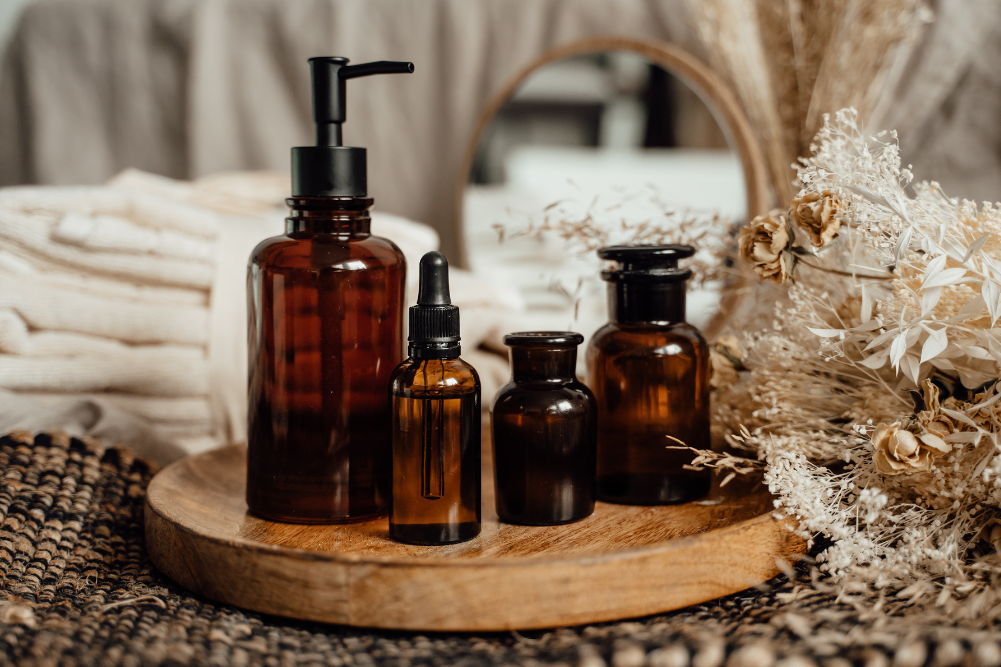I started looking at labels back in 2011 when I went vegan. At that point, it was less about living a low-tox lifestyle and more about making sure I wasn’t purchasing items that were tested on animals or made with animal products. I found many brands proudly promoting things like “all natural” and “no parabens, sulphates or harsh chemicals” on their labels. Even still, I found these “clean, eco-friendly” brands sometimes still affected my skin and caused irritation, itching and sometimes rashes. As I learned more, I realised this was most likely due to synthetic fragrances, which can wreak havoc for many. But it got me thinking about what other chemicals might be lurking in products that I was bringing into my home.
Not all companies are forthcoming about including ingredients on their packaging. In Australia, companies must legally list ingredients on skin and body care labels, yet there is no legal requirement to disclose ingredients on household cleaning products. Some cruelty-free brands proactively do, but the majority of commercial brands don’t. They market themselves as “trusted for generations” and many hold awards for being trusted brands. While they don’t include ingredients on their labels, what they do include (in fine print on the back of the package at the very bottom) is a hazard warning and poison control details!
Other brands claim their products are “all natural” or “derived from natural sources” but do not disclose how ingredients are sourced, extracted, or manufactured. For instance, parabens occur in nature (they can be found in blueberries), but it’s unlikely these companies are sourcing parabens from blueberries to put into their highly-toxic cleaning products.
If you’ve never done this, have a look at some of the products in your home – whether they be beauty, cleaning, or laundry products. Below are a just a few of the many ingredients commonly found in everyday products that you may want to be aware of. Not only are they harmful to humans, but many are also toxic to animals and the environment.*
Aluminium Chlorohydrate – a light metal found in antiperspirants and used to block pores to reduce sweating; accumulates in the body (brain, kidneys, liver), and affects absorption of minerals and neurological systems
BHT/BHA (Butylated Hydroxytoluene/Butylated Hydroxyanisole) – used as synthetic preservatives and antioxidants; may cause headaches/migraines, allergic reactions, and aggressive behaviour (BHA is listed as a possible human carcinogen while long-term exposure to BHT has demonstrated toxicity to mice, causing liver, lung, thyroid and kidney issues)
Cocamidopropyl Betaine – synthetic ingredient used as a foaming agent in products like baby wash and shampoo; can cause contact dermatitis as well as skin and eye irritation
Diethylene glycol – found in window cleaners; negatively affects endocrine (hormone) processes and foetal development
Formaldehyde – used in spray and wick deodorisers; known respiratory irritant and carcinogen
Fragrances – oftentimes petroleum-based and found in deodorant, moisturiser and hand wash, as well as shampoo, laundry and cleaning products; can cause respiratory and skin irritation, headaches, sneezing and watery eyes
Parabens – synthetic preservative found in a variety of products ranging from body care to toothpaste; these are known endocrine (hormone) disruptors and may also cause skin irritations including hives, eczema, and rashes
Petroleum – solvent found in many body and cleaning products; damages mucous membranes and contributes to the depletion of non-renewable resources
Phenols – found in many disinfectants and toilet bowl cleaners; toxic to the respiratory and circulatory systems
By no means is this a complete list of all the harmful chemicals found in “trusted” products. This may seem scary, but the good news is that you can make many of your own DIY products at home using simple ingredients like bicarb soda, vinegar and essential oils that are safe, affordable, and effective (and you won’t need to protect yourself with surgical gloves and face masks to use them!).
By no means is this a complete list of all the harmful chemicals found in “trusted” products. This may seem scary, but the good news is that you can make many of your own DIY products at home using simple ingredients like bicarb soda, vinegar and essential oils that are safe, affordable, and effective (and you won’t need to protect yourself with surgical gloves and face masks to use them!).
Here are just a few of my favourite DIY recipes. I always recommend using glass or stainless steel containers and high-quality, therapeutic grade essential oils. It’s also good practice to patch test to ensure no staining/discolouration (surfaces) or sensitivities (skin) occur.
Household cleaners
Multi-purpose spray
- 500ml glass spray bottle
- 60ml (¼ cup) white or cleaning vinegar
- 400ml (1 ¾ cups) water
- 30 drops total essential oil
- Combine, shake before each use and wipe surface clean with damp cloth
I like to use the following: Lemon and Lavender; Eucalyptus, Peppermint and Wild Orange; Lemon, Tea Tree and Clove + one drop Oregano
Glass/window cleaner
- 500ml glass spray bottle
- 340ml (1 ½ cups) distilled water
- 120ml (½ cup) white or cleaning vinegar
- 8 drops lemon essential oil
Tip: for a streak-free finish, wipe surface dry with old newspaper
Mould/mildew cleaner
- 500ml glass spray bottle
- 500ml (2 cups) white or cleaning vinegar
- 10 drops each wild orange, clove and tea tree essential oils
- 5 drops Oregano essential oil
Spray on mould-affected area and let sit 5-10 minutes. Wipe off with damp cloth or rinse with water. (This one is best not to use on granite surfaces. If using on grout, be sure to wipe/rinse rather than spray and stay.)
Toilet bowl cleaner
- ½ cup bicarbonate soda
- 60ml (¼ cup) white or cleaning vinegar
- 10 drops tea tree essential oil
Mix ingredients to dissolve bicarb soda, add to toilet, let sit 10-15 minutes, scrub with toilet brush and flush
Body Products
Body wash
- Glass pump bottle
- 120ml (½ cup) unscented castile soap
- 60ml (¼ cup) vegetable glycerin
- 45ml (3 tablespoons) fractionated coconut oil
- 10-15 drops total essential oil
- Shake before each use to combine
I like to use oils like lavender, lemongrass, palmarosa and roman chamomile. for a more masculine aroma, use oils like cedarwood, cypress and sandalwood.
Hand Wash
- 500ml glass bottle with pump top
- 2 tablespoons castile soap
- 1 tablespoon fractionated coconut oil
- 10 drops each lavender and tea tree essential oil
Top with water and shake before each use to combine
Deodorant
- 1 teaspoon shea butter, softened (you can easily omit this if you don’t have it)
- ¼ cup coconut oil, softened
- ¼ cup total of bicarb/baking soda + cornstarch (you can also use arrowroot powder instead of cornstarch)
- 20-30 drops essential oil
- Mix to combine and place in refrigerator for about an hour to set
I like to use a combination of essential oils including tea tree, lavender, roman chamomile and lemongrass. Be mindful of using citrus oils, as they contain photosensitive properties and may cause skin irritation or temporarily darken the skin if exposed to sun.
Chesty rub
- ¼ – ½ cup coconut oil, melted
- 10 drops respiratory blend essential oil
- 5 drops frankincense essential oil
- Combine all ingredients and put in refrigerator until set. Rub on chest to assist with cough and congestion.
The possibilities for DIY products are endless. Don’t be afraid to experiment and have fun! Your body will thank you for it.
*More information can be sourced from the Environmental Working Group
For more information visit https://endeavourshortcourses.edu.au
Interested in eco-living?
Learn to lighten your eco-footprint and improve your health with Endeavour College’s ‘Eco Living: natural choices for a green lifestyle’ short course.




